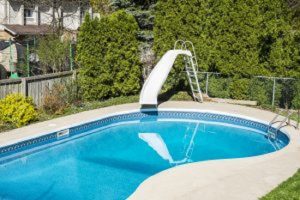A swimming pool is more than just a place to swim—it’s a statement piece, a relaxation zone, and an investment in your lifestyle. One of the most important decisions when designing or choosing your pool is its shape. The right pool shape can enhance your backyard’s aesthetic, cater to your needs, and maximize your space. Here’s how to pick the best shape for your swimming pool.
- Assess Your Space and Layout
The size and layout of your backyard will significantly influence your pool’s shape. For compact spaces, geometric shapes like rectangles or squares can maximize usable area while maintaining a clean, modern look. Larger spaces, on the other hand, provide the flexibility to incorporate more creative or freeform designs, such as kidney or figure-eight shapes.
Think about existing features like patios, decks, or landscaping. A pool should complement the surrounding environment, not overpower it.
- Define Your Purpose
Consider how you plan to use the pool. Each shape offers unique benefits:
Rectangular Pools: Perfect for laps and fitness enthusiasts, their long, straight edges make swimming easy and efficient.
Freeform Pools: Designed to mimic natural water bodies, these pools are great for creating a serene, resort-like atmosphere.
Kidney-Shaped Pools: Ideal for families, these pools offer shallow and deep sections that suit swimmers of all ages.
L-Shaped Pools: Excellent for combining relaxation and functionality, the smaller leg of the “L” can be used as a wading area or for lounging.
- Match Your Style
Your pool should reflect your style and enhance your home’s design. If you prefer sleek, minimalist aesthetics, geometric shapes with sharp edges are a natural choice. On the other hand, if you lean toward a more organic or tropical vibe, a freeform or lagoon-style pool can bring that vision to life. - Think About Functionality and Flow
The pool’s shape should facilitate ease of movement around your backyard. For example, a rectangular pool fits well alongside a long patio or dining area, while a circular or oval pool can create a cozy focal point in the middle of a garden. Ensure the shape allows for proper traffic flow and doesn’t obstruct key areas. - Budget Considerations
Certain shapes may require more materials, complex designs, or labor-intensive installation, affecting the overall cost. Freeform pools, for instance, often need custom construction, which can increase expenses compared to standard rectangular designs. Factor your budget into the decision to find a balance between design and affordability. - Consult a Professional
A pool designer or contractor can offer valuable insights into the best shape for your specific needs and space. They’ll consider aspects like sun exposure, drainage, and terrain to recommend a pool shape that’s both functional and visually appealing.
Final Thoughts
Choosing the best shape for your swimming pool is a blend of practicality, aesthetics, and personal preference. By assessing your space, defining your needs, and considering style and functionality, you can create a pool that’s perfectly tailored to your lifestyle. Whether it’s a sleek rectangular pool for laps or a flowing freeform design for relaxation, the right shape will transform your backyard into an oasis.
Ready to begin creating the ideal pool or water feature for your space? Trust us with the work, and you’ll be swimming in no time! For more information, contact us online or reach out on Whatsapp at +234 707 566 9690.

